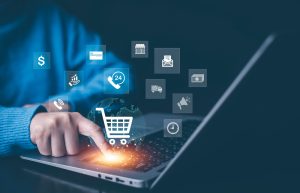
Metrics are everything in the SEO world. Whether we are dealing with a new client who found this by searching for ‘local SEO services near me’ or a client that has been with us long enough to have undergone regular SEO and website audits, metrics are the measurement of our success as an agency. But here is the thing: success requires tracking the right metrics.
That’s not as easy as it sounds. SEO offers innumerable metrics one could choose to follow. They are not all of equal value. In fact, most are what Search Engine Land’s Becky Simms refers to as ‘vanity’ metrics.
More About Vanity Metrics
A metric is a data point one looks at for the purposes of analysis, like page views for example. Vanity metrics are those that look good on paper but have very little influence on actionable results.
An SEO agency’s main task is to implement strategies that help a client reach its SEO goals. The problem with vanity metrics is that they are based on a one-size-fits-all approach to SEO. But each client’s goals are uniquely related to its needs and circumstances. Chasing vanity metrics doesn’t do much for clients who might eventually get fed up and move on.
Chase Metrics That Matter
The antidote for chasing vanity metrics is to chase the metrics that matter. How do you do that? Time and space will not permit a detailed analysis – the process is quite complicated – but we can offer an overview broken down into four basic components.
1. Defining the Target Audience
Anyone who knows anything about SEO and marketing knows how important it is to define an organization’s target audience. But we often take this component for granted. We treat it very glibly and give it only minor attention. That is a mistake. Sims recommends going above and beyond to define one’s audience by utilizing surveys, social media, research, interviews, CRM data, and more.
The idea is to get to know customers intimately. It is to understand what motivates them to do what they do. Defining the target audience even includes understanding what prevents them from taking actionable decisions when interacting with your company.
2. Researching Audience Channels
A more intimate knowledge of the target audience can be obtained by researching them through the various channels they use. A lot of your company’s audience members probably hang out on social media. Check it out. Pay attention to social media trends as they relate to your industry. In addition, look at consumer insight information. Study product and service reviews. Look at any channel through which your target audience might express its thoughts.
3. Plotting the Customer Journey
The third component is plotting a customer journey. This is important because not every journey ends with the sale. Not every journey has to end that way. It is important to plot the journey so that you know how many customers are actually completing it. Comparing journey data against what you gleaned from channel research will tell you a lot.
4. Tracking the Customer Journey
The final component is journey tracking. If the first three components are aligned, tracking the customer journey will prove that you are chasing the right metrics. How so? The right metrics will guide your team as they guide customers through to journey completion. Lots of complete journeys means you have nailed it.
There are tons of vanity metrics out there. If your company is chasing them, you might not be getting the ROI you would otherwise expect from your SEO efforts. Perhaps it’s time to scrap all those metrics and start over.















